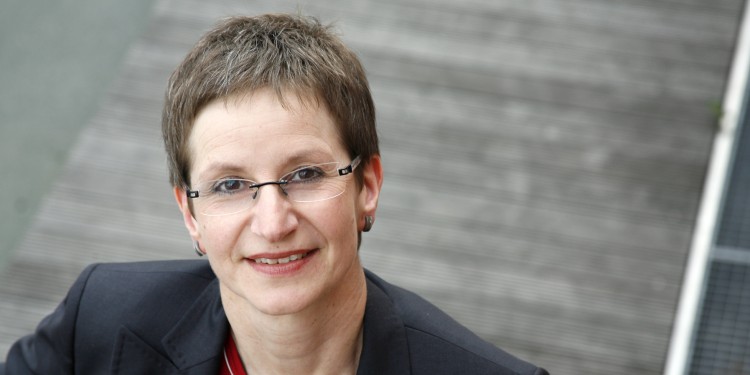
Voices from Beyond
The voice is a fleeting medium. As the primary means of human communication, it also plays an important role in religion. And yet it is difficult to grasp and seems to elude discussion. But a research project at the Cluster of Excellence has nonetheless approached the voice in a religious context: scholars from various disciplines have studied the voice as a medium of religious communication, and have discovered in historical testimonies, as well as in literature and artwork from various religions and cultures from antiquity to the present day, what can be called “voices from beyond”.
Literature scholar Martina Wagner-Egelhaaf explains: “Whether in texts or images, radio programmes or films: in numerous works from various ages and religions people have heard voices they regard as divine. There is, for example, the conversion of Saul at Damascus, as narrated in the Acts of the Apostles: Saul hears a voice from heaven together with an apparition of light, and the voice says to him: ‘Saul, Saul, why do you persecute me?’ When demons are exorcised, spirit beings can also be heard. These occurrences of voices link this world with the beyond”. With a team of researchers from the fields of reli-gious studies, history, literary studies, ethnology, theology, and sociology, she has investigated the medium of the “voice” in Hinduism, Christianity, Islam, and other religions.
The team has found in numerous sources both human voices that arise during religious performances, as well as incorporeal voices that come to the hearer from the outside, and that are often attributed to gods or spirits. One example of the latter is to be found in St. Augustine’s con-version narrative, the Confessions, when he hears a voice calling on him to read (“take up and read”). The idea that sacred texts are revealed by God is also based on the idea of a voice heard by the writer: Christian art has depicted this, for example, as a scene between angel and evangelist. Martina Wagner-Egelhaaf again: “But ‘inner voices’ are also seen as connecting people to a divine sphere, as in the idea of a ‘voice of the inner light’, as arose among the Quakers in seventeenth-century England.”
How human voices function in religious rituals is made clear in the example of the Muslim Sufi shrine of Baba Ghor in India: pilgrims suffering from forms of possession bring the demonic spirits torturing them into dialogue with the spirits of saints – with the help of their own human voices. In this way, the power of the spirits is intended to defeat the demons. Sermons by the Hindu guru Morari Bapu are understood by the researchers as part of a “religious soundscape” that creates the feeling of religious community and the experience of the individual not through eye-contact, but through ear-contact.
In different religions, human voices sometimes also interweave with those from the world beyond. Thus, discussions of doctrine between a Hindu guru and his students create a person-to-person connection, while at the same time what he teaches is believed to have divine origins and is conveyed through the sound of the voice. An interweaving of voices from this world and the world beyond can also be seen in a conversion account from the nineteenth century: words that a schoolteacher from Saxony travelling through the USA first heard inwardly prompted him later to convert to Mormonism when he heard the very same words spoken by a missionary.
For Wagner-Egelhaaf, radio voices and Ingeborg Bachmann’s radio play Die Zikaden (The Cicadas) show how voices whose origin is not discernible are also sometimes attributed metaphysical significance and political authority outside the world religions. Media Studies therefore sees a “particular affinity of the radio for metaphysical subjects”.
Martina Wagner-Egelhaaf is Professor of Modern German Literature at the WWU and principal investigator at the Cluster of Excellence
A Book that Speaks
The findings of the interdisciplinary research project appeared under the title Stimmen aus dem Jenseits / Voices from Beyond. Besides the German and English essays by those involved in the project, the book also includes the sources that they investigated: texts and images, as well as audio and video on an accompanying DVD. “Because a book about the voice must also be able to speak”, says Martina Wagner-Egelhaaf.
Martina Wagner-Egelhaaf (Ed.): Stimmen aus dem Jenseits / Voices from Beyond. Ein interdisziplinäres Projekt / An Interdisciplinary Project, Würzburg: Ergon-Verlag 2017.
